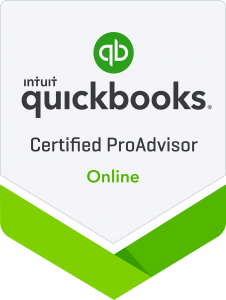Material Participation 1.469-5(f)
Rarely do you see such a broad statement in a Regulation.
(1)In general. Except as otherwise provided in this paragraph (f), any work done by an individual (without regard to the capacity in which the individual does the work) in connection with an activity in which the individual owns an interest at the time the work is done shall be treated for purposes of this section as participation of the individual in the activity.
Rental activity is different, so we need first to divide the world into rental activity and everything else.
All Rental activity is Passive is one mantra of the tax code.
But there is a different voice when it comes to rental activity being passive if a person can qualify as a Real Estate Professional (REP).
An individual who is qualified as a Real Estate Professional (REP) and meets the 2 tests below is able to qualify to show material participation in rental activities and take losses as non passive (losses that can reduce wages, dividends, etc.):
1. More than 50% of your time working is spent in the real estate business. 469(c)(7)(B)(i). The term “real property trade or business” is broadly defined as any real property development, redevelopment, construction, reconstruction, acquisition, conversion, rental, operation, management, leasing, or brokerage trade or business Sec. 469(c)(7)(C).
2. You must work at least 750 hours in the real estate business. 469(c)(7)(B)(ii). Be mindful that no time will qualify if you are an employee without a 5% ownership interest in the Company. 469(c)(7)(D)(ii).
However, just meeting these 2 tests is not sufficient.
The next objective is to satisfy just one of seven tests for material participation in each activity. (1)
You would think that if you had 750 hours in the real estate industry that would be sufficient, but no. Further, the material participation requirement applies to both rental and non rental (everything else) activity.
For example: Fred is a realtor and also has an ownership interest in a construction corporation. Fred only spent 20 hours a year working at the construction company. Those 20 hours would not be sufficient to catagorize the loss from the construction company as non passive (active). However, even if Fred had 600 hours working at the construction corporation, these hours may not count, if they are not the right type of hours.
Further, even if Fred has material participation as a Realtor and/or as a shareholder in the construction corporation, this would not mean he has met the material participation requirement for the rental properties he owns. Rental Properties require Fred, even after qualifying as a REP, to show material participation in the rental properties separately from other non rental business activities, (for example his construction corporation).
So now we have two issues to face:
What types of hours are acceptable?
No Trivial hours spent watering the office plants and dusting the office furniture in order to meet the material participation requirement is allowed. 1.469-5T(f)(2)(i)
No hours count for time spent as an Investor reviewing financial statements, preparing summaries, monitoring the finances and operations, etc.
Sometimes no hours count for Management if another person has more hours than Fred in Management and that other person gets compensated.(2).
So what hours are left? Chores. Specific tasks that Fred performs for the Corporation. Brown v. Commissioner T.C. Memo 2019-69
Let’s focus in on Chores.
Types of Chores:
1. Handling financing
2. Product development
3. Customer Retention
The Court in Montgomery v. Commissioner T.C. Memo 213-151 adds to the Chores list:
4. Office functions
5. Managing Payroll
6. Preparing official documents
7. Attending business meetings
Can’t all of these items 1 through 7 be considered Management? Yes – So how do you win this argument that these Chores are not Management?
A. There is another person performing the day-to-day Operations.
B. If the IRS argues this other person is not performing Management hours, thenyou will agree that Fred performed more Management hours than any other person. Therefore, now you count the hours as Management hours instead of Chore hours.
When you are keeping records to meet the Material Participation Test you have to keep in mind how these hours are being categorized. Fred could have the most detailed records ever on plant watering, and it will do no good.
Now the next issue is,
What relationship does Fred have to the Construction Corporation?
Is Fred a shareholder, an employee, an agent, a subcontractor, or does it matter?
As Bill Murray proclaimed in Meatballs, “It just doesn’t matter.” Well almost. Fred only has to have an ownership interest. Fred could be the 1st basemen for the NY Yankees and as long as he meets on the 7 material participation tests and has an interest in the activity, he is allowed to take the loss.
If Fred is trying to qualify as a REP to deduct his rental property losses as a employee of a real estate trade or business, then Fred needs to have a 5% ownership interest. Otherwise, if Fred is trying to meet the material participation
test for the construction corporation (non rental), then he only has to show any interest. So, he could have 1% interest in the construction corporation, and he does not need to be an employee.
1.469-5(f) talks about individuals. How do the Courts look at the issue of the relationship of the various parties to a Non Grantor Trust and material participation?
There are 2 types of Trusts to discuss here.
Grantor Trusts. The person who creates the Trust retains one or more powers over the Trust and thus the trust income is taxable to the grantor.
With the Grantor Trust the rules discussed above apply.
Non Grantor Trusts. The grantor is not the trustee nor beneficiary.
The Courts in Mattie K Carter Trust ruled as to counting as material participation the hours spent by the following as counting:
Employees of the Trust – YES
Trustees – YES (this is the only catagory the IRS agrees to)
Trustees working as employees of the Trust – YES
Trustee working as employees for entities owned by the Trust – YES
Agents – YES
Beneficiary – NO
Grouper. A different kind of fish.
If Fred is having trouble meeting the material participation requirements for each of his activities, then he can group one or more activities as one to meet one of the 7 possible material participation test for the group as a whole. Twenty hours working at the construction company is not sufficient, so Fred may group the construction company with his real estate activity.
To refresh, this is all being done to get the losses to flow through to offset wages, dividends and other income.
Items to consider:
Rental Groupers and Non rental Groupers don’t swim in the same pool.
A taxpayer may not group a rental real estate activity with any other activity of the taxpayer. 1.469-9(e)(3)(i).
Also once an activity is in a Group, then it is swimming with the other fish and is part of the Group. It is helpful to qualify for material participation, but imposes limits when you sell one of the activities inside the Group.
What if Fred buys a new business, say, a title company. He can elect to add the title company to the Group or to keep it separate. But if he wants to group the two activities, he has to file a Declaration about an Appropriate Economic Unit.
Also, say 5 years from now Fred wants to take the title company and group it with the Construction company. He can do that but must file a Declaration.
1. A declaration that the regrouping (combining 2 or more existing groups) makes up an appropriate economic unit.
2. A statement on what the material change in the facts and circumstances were that made the original grouping inappropriate.
Even when Fred first acquires the title company and wants to group it with the construction corporation, he has this issue of its addition making an appropriate economic unit.
1. The similarities and differences in the types of trades or businesses,
2. The extent of common control,
3. The extent of common ownership,
4. The geographical location, and
5. The interdependencies between or among activities, which may include the extent to which the activities:
A. Buy or sell goods between or among themselves,
B. Involve products or services that are generally provided together,
C. Have the same customers,
D. Have the same employees, or
E. Use a single set of books and records to account for the activities.
This is a general discussion. See your tax advisor before using this information to make a decision in your specific situation.
1. Material Participation Test Under the Temporary Regulations
Temp. Regs. Sec. 1.469-5T(a) provides that a taxpayer can establish material participation in an activity by satisfying one of seven tests:
1. The individual participates in the activity for more than 500 hours during such year;
2. The individual’s participation in the activity for the taxable year constitutes substantially all of the participation in such activity of all individuals (including individuals who are not owners of interests in the activity) for such year;
3. The individual participates in the activity for more than 100 hours during the taxable year, and such individual’s participation in the activity for the taxable year is not less than the participation in the activity of any other individual (including individuals who are not owners of interests in the activity) for such year;
4. The activity is a significant participation activity (within the meaning of ) for the taxable year, and the individual’s aggregate participation in all significant participation activities during such year exceeds 500 hours;
5. The individual materially participated in the activity (determined without regard to this paragraph (a)(5)) for any five taxable years (whether or not consecutive) during the ten taxable years that immediately precede the taxable year;
6. The activity is a personal service activity (within the meaning of ), and the individual materially participated in the activity for any three taxable years (whether or not consecutive) preceding the taxable year; or
7. Based on all of the facts and circumstances (taking into account the rules in ), the individual participates in the activity on a regular, continuous, and substantial basis during such year.(ii)Certain management activities. An individual’s services performed in the management of an activity shall not be taken into account in determining whether such individual is treated as materially participating in such activity for the taxable year under paragraph (a)(7) of this section unless, for such taxable year –
2. (A) No person (other than such individual) who performs services in connection with the management of the activity receives compensation described in section 911(d)(2)(A) in consideration for such services; and
(B) No individual performs services in connection with the management of the activity that exceed (by hours) the amount of such services performed by such individual.


